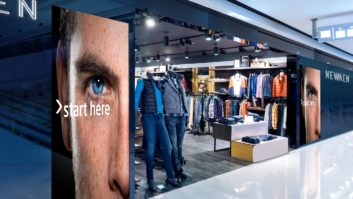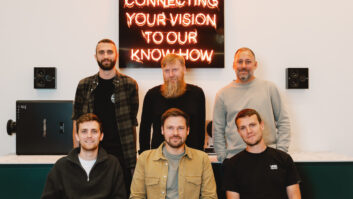 Just a few years ago, the idea of competitive AV equipment manufacturers partnering was almost unheard of. Today, strategic partnerships have emerged as a notable trend, and the reason is simple: customers want to purchase solutions, not products.
Just a few years ago, the idea of competitive AV equipment manufacturers partnering was almost unheard of. Today, strategic partnerships have emerged as a notable trend, and the reason is simple: customers want to purchase solutions, not products.
The recognition of this buying preference among many in the AV industry, particularly those involved in conferencing, has resulted in collaborations between seemingly competing businesses that were once unimaginable. Driving this trend is the emergence of dominant unified communication (UC) conferencing platforms that have become mission critical for the distributed and hybrid nature of modern work – namely Microsoft Teams, Zoom, Google Meet, and WebEx.
NEW STANDARD
These platforms have set a new standard for business communication, requiring manufacturers to not only be compatible with their platforms, but, optimally, to also achieve certification across their product lines as an approved or preferred provider. The top questions customers ask when evaluating conferencing hardware are whether it will work with their preferred UC solution and, should issues emerge, can problems be addressed quickly and effectively between each party?
Certification is essential to providing end users and their integrators with the confidence that all of their selected equipment will work well together and, more importantly, that all of the equipment – from loudspeakers to controllers to amps to microphones to panel displays – will function as an integrated solution.
This new age of partnerships is also affecting the integrator market. They must respond to the emergence of dominant UC players by reorienting their businesses around not only designing and building AV systems, but also providing on-going services and support. Integrators must ensure that the hardware they are designing and installing works well with the prevailing customer’s UC vendor, or risk losing conferencing business.
Furthermore, IT teams are increasingly tasked with managing AV procurement, design, and provisioning. Due to the widespread reliance on UC, the days of a small number of conference-equipped for video conferencing has rapidly given way to a large number of smaller, distributed “huddle” or small conference room spaces that require significantly more hardware and management within the corporate network than in the past.
The explosion of IoT devices in the office environment, including conferencing equipment, means IT is tasked with managing an increasingly large and more diverse array of devices often with the same internal resource constraints. Here, integrators can help manage the load by creating service divisions to better support their customers while also enjoying a more robust recurring revenue stream.
MORE RELIANT
End users, as they become more aware of and increasingly reliant upon UC platforms and the associated hardware to get work done, expect the conference equipment critical to doing their job is simple to operate and works perfectly every time as a single solution.
For increasingly popular bring-your-own-meeting (BYOM) scenarios, users expect that when they plug in their laptop or other work device, they can start the meeting in seconds and enjoy audio and video that is clear and reliable. Here again, partnerships between hardware vendors and the dominant UC platforms can help ensure a positive, productive experience. Partnerships provide the pathways for manufacturers and UC platforms to share information so they can more easily update firmware, quickly implement patches, and above all, generate client delight that will translate into repeat business and more business in the future.
All along the AV value chain, partnerships are proving to be a winning formula that can take a collection of parts and transform them into a complete solution, tying together AV manufacturers, UC providers, integrators, the customers, and ultimately the end user who increasingly rely on conferencing technology to get work done.







